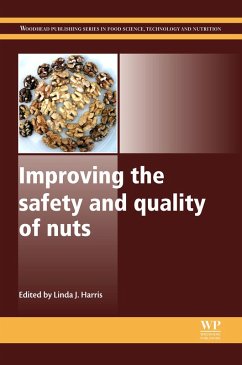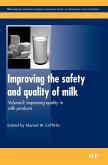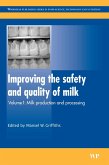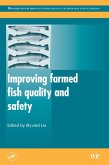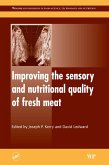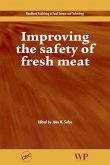As tree nuts and peanuts become increasingly recognised for their health-promoting properties, the provision of safe, high quality nuts is a growing concern. Improving the safety and quality of nuts reviews key aspects of nut safety and quality management.
Part one explores production and processing practices and their influence on nut contaminants. Chapters discuss agricultural practices to reduce microbial contamination of nuts, pest control in postharvest nuts, and the impact of nut postharvest handling, de-shelling, drying and storage on quality. Further chapters review the validation of processes for reducing the microbial load on nuts and integrating Hazard Analysis Critical Control Point (HACCP) and Statistical Process Control (SPC) for safer nut processing. Chapters in part two focus on improving nut quality and safety and highlight oxidative rancidity in nuts, the impact of roasting on nut quality, and advances in automated nut sorting. Final chapters explore the safety and quality of a variety of nuts including almonds, macadamia nuts, pecans, peanuts, pistachios and walnuts.
Improving the safety and quality of nuts is a comprehensive resource for food safety, product development and QA professionals using nuts in foods, those involved in nut growing, nut handling and nut processing, and researchers in food science and horticulture departments interested in the area.
Part one explores production and processing practices and their influence on nut contaminants. Chapters discuss agricultural practices to reduce microbial contamination of nuts, pest control in postharvest nuts, and the impact of nut postharvest handling, de-shelling, drying and storage on quality. Further chapters review the validation of processes for reducing the microbial load on nuts and integrating Hazard Analysis Critical Control Point (HACCP) and Statistical Process Control (SPC) for safer nut processing. Chapters in part two focus on improving nut quality and safety and highlight oxidative rancidity in nuts, the impact of roasting on nut quality, and advances in automated nut sorting. Final chapters explore the safety and quality of a variety of nuts including almonds, macadamia nuts, pecans, peanuts, pistachios and walnuts.
Improving the safety and quality of nuts is a comprehensive resource for food safety, product development and QA professionals using nuts in foods, those involved in nut growing, nut handling and nut processing, and researchers in food science and horticulture departments interested in the area.
- Reviews key aspects of nut safety and quality management and addresses the influences of production and processing practices on nut safety
- Analyses particular nut contaminants, safety management in nut processing and significant nut quality issues, such as oxidative rancidity
- Places focus on quality and safety in the production and processing of selected types of nuts
Dieser Download kann aus rechtlichen Gründen nur mit Rechnungsadresse in A, B, BG, CY, CZ, D, DK, EW, E, FIN, F, GR, HR, H, IRL, I, LT, L, LR, M, NL, PL, P, R, S, SLO, SK ausgeliefert werden.
"Horticulturalists, food scientists, biochemists, and others review the essential aspects of safety and quality management in tree nuts and peanuts, focusing in particular on microbial safety and on problematic contaminants such as mycotoxins that have recently been associated with nuts. Among the topics are agricultural practices to reduce microbial contamination, pest control in post-harvest nuts,." --ProtoView.com, February 2014

